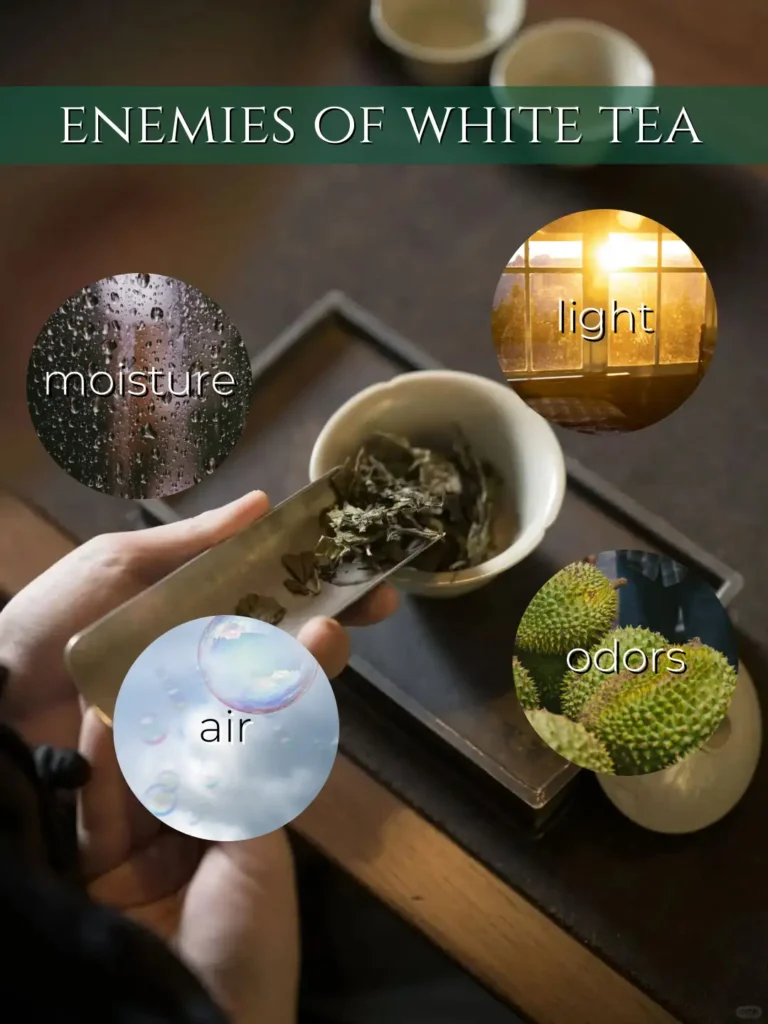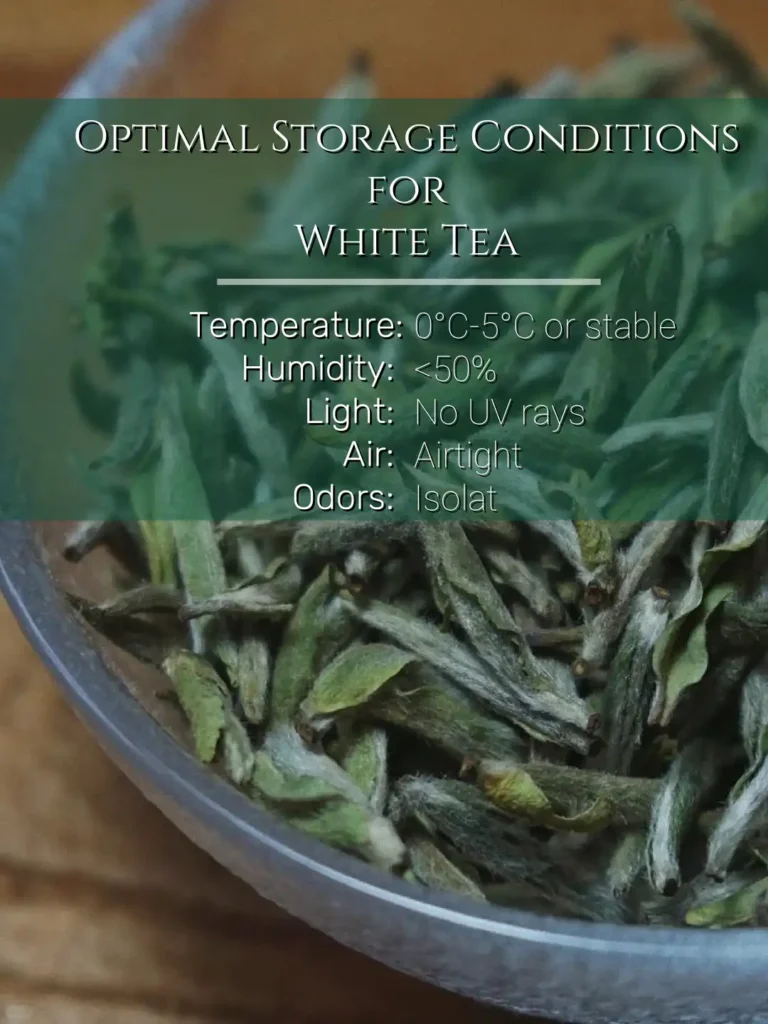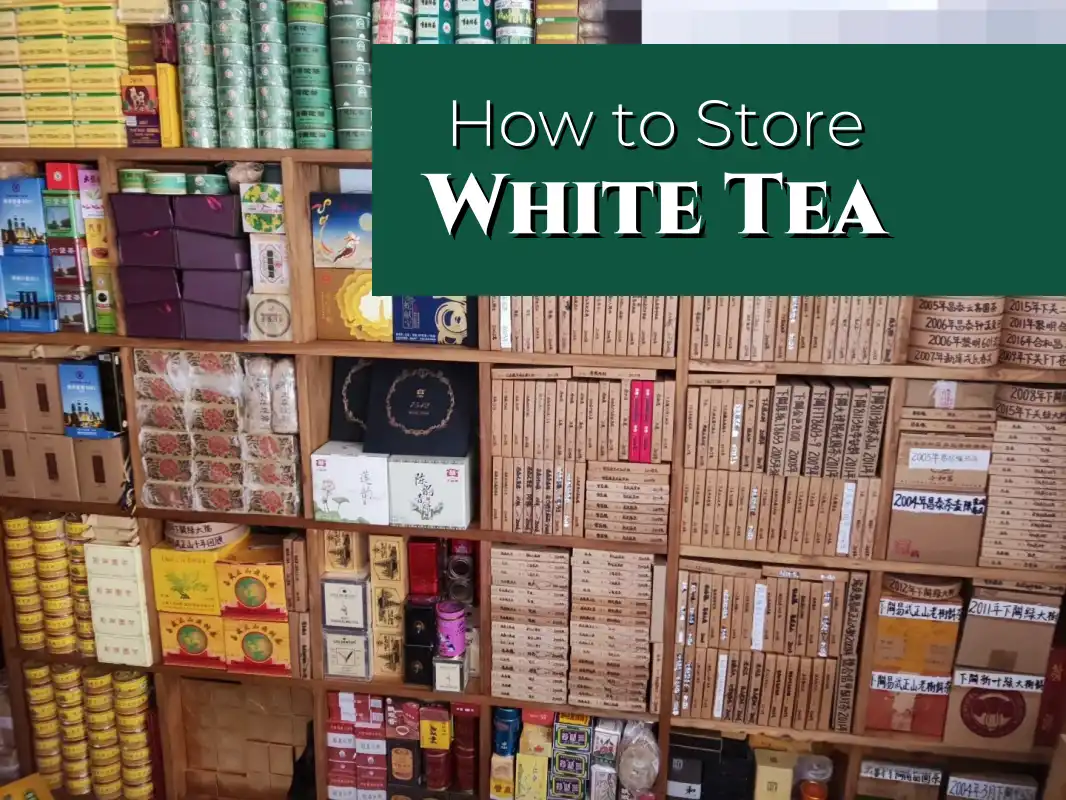White tea, renowned for its delicate flavor and numerous health benefits, is a prized possession for tea enthusiasts. Two popular varieties, White Peony and Shou Mei, are particularly cherished for their unique characteristics. However, to fully appreciate these teas, proper storage is crucial. This comprehensive guide will explore the best practices for storing white tea, ensuring that you can savor its exquisite taste and aroma for years to come.
Understanding the Nature of White Tea
Before delving into storage techniques, it’s essential to grasp the fundamental nature of white tea. Unlike its more oxidized counterparts, white tea undergoes minimal processing, preserving its natural compounds and subtle flavors. This characteristic makes it particularly susceptible to external influences, necessitating meticulous storage practices.

White Peony, known for its silver-tipped buds and young leaves, offers a mellow, slightly sweet taste. Shou Mei, composed of more mature leaves, presents a fuller body with nutty undertones. Both these varieties require careful handling to maintain their distinctive profiles.
The primary enemies of white tea are moisture, light, air, and strong odors. Exposure to these elements can lead to rapid deterioration, affecting both taste and aroma. Therefore, the goal of proper storage is to shield the tea from these detrimental factors, preserving its innate qualities.
Optimal Storage Conditions for White Tea
Creating the ideal environment for storing white tea involves several key considerations:
Temperature Control: White tea thrives in cool, stable temperatures. Aim for a range between 0°C to 5°C (32°F to 41°F) for long-term storage. If refrigeration is not feasible, maintain a consistent room temperature, avoiding fluctuations that can cause condensation.
Humidity Management: Excessive moisture is detrimental to white tea, potentially leading to mold growth. Strive for a relative humidity level below 50%. In humid climates, consider using desiccants or dehumidifiers in your storage area.
Light Protection: UV rays can degrade the quality of white tea rapidly. Store your tea in opaque containers or in a dark cupboard to shield it from light exposure. This precaution is particularly crucial for preserving the delicate flavors of White Peony and Shou Mei.
Air Exclusion: Oxygen exposure accelerates the aging process of white tea, potentially altering its flavor profile. Utilize airtight containers to minimize air contact. For added protection, consider vacuum-sealing smaller portions for long-term storage.
Odor Isolation: White tea readily absorbs surrounding odors, which can taint its natural aroma. Store your tea away from strong-smelling substances, including spices, coffee, and aromatic oils.

Practical Storage Solutions for White Tea Enthusiasts
Implementing effective storage strategies doesn’t require elaborate setups. Here are some practical solutions for preserving your white tea:
| Storage Strategy | Key Points |
|---|---|
| Choose Appropriate Containers | Use ceramic canisters with tight lids; separate containers for different teas like White Peony and Shou Mei. |
| Utilize Vacuum Sealing | Removes air, prevents oxidation, and preserves freshness for long-term storage. |
| Embrace Cold Storage | Use a tea fridge with airtight containers; let tea reach room temperature before opening. |
| Consider Traditional Clay Containers | Unglazed clay helps regulate humidity and enhances flavor over time; dedicate to white tea only. |
| Implement a Rotation System | Use first-in, first-out; label containers with purchase dates. |
| Monitor Storage Conditions | Check temperature and humidity regularly using hygrometers and thermometers. |
| Portion Control | Divide larger quantities into smaller portions to minimize air exposure. |
| Avoid Refrigerator Storage for Daily Use | Keep daily use tea at room temperature to avoid temperature fluctuations and moisture. |
| Use Oxygen Absorbers | Add oxygen absorber packets to containers for extra protection. |
| Create a Tea Cellar | For collectors, a tea cellar provides ideal conditions for aging and storing rare teas. |
Choose Appropriate Containers: Opt for containers made of materials that don’t impart flavors or odors. Ceramic canisters with tight-fitting lids are excellent choices. For White Peony and Shou Mei, consider using separate containers to maintain their distinct characteristics.
Utilize Vacuum Sealing: For long-term storage, vacuum-sealing is highly effective. This method removes air, preventing oxidation and preserving the tea’s freshness. It’s particularly beneficial for storing larger quantities of white tea.
Embrace Cold Storage: If you have a dedicated tea refrigerator, use it for storing white tea. Ensure the temperature remains constant and use airtight containers to prevent moisture absorption. When removing tea from cold storage, allow it to reach room temperature before opening to avoid condensation.
Consider Traditional Clay Containers: Unglazed clay containers, such as Yixing teapots, can be excellent for storing white tea. These porous materials help regulate humidity and can enhance the tea’s flavor over time. However, dedicate specific containers to white tea to prevent flavor mixing.
Implement a Rotation System: To ensure you’re consuming your white tea at its peak, implement a first-in, first-out system. Label your containers with purchase dates and enjoy older teas before opening new batches.
Monitor Storage Conditions: Regularly check your storage area for temperature and humidity fluctuations. Use hygrometers and thermometers to maintain optimal conditions, especially if you’re storing premium White Peony or Shou Mei varieties.
Portion Control: Consider dividing larger quantities of white tea into smaller portions for storage. This approach minimizes air exposure each time you open the container, preserving the tea’s freshness for longer periods.
Avoid Refrigerator Storage for Daily Use: While cold storage is beneficial for long-term preservation, frequently moving tea in and out of the refrigerator can expose it to temperature fluctuations and moisture. Keep a small portion at room temperature for daily consumption.
Use Oxygen Absorbers: For an extra layer of protection, consider adding oxygen absorber packets to your storage containers. These sachets remove oxygen from the enclosed space, further preserving the tea’s quality.
Create a Tea Cellar: If you’re a serious collector, consider creating a dedicated tea cellar. This controlled environment can provide ideal conditions for aging and storing various types of white tea, including rare or vintage varieties.
By implementing these storage techniques, you can significantly extend the shelf life of your white tea, ensuring that each cup of White Peony or Shou Mei is as delightful as the first. Remember, proper storage is an investment in your tea experience, allowing you to fully appreciate the nuanced flavors and aromas that make white tea so cherished among connoisseurs.
Conclusion
Whether you’re a casual sipper or a devoted tea aficionado, these storage practices will help you maintain the integrity of your white tea collection. With careful attention to temperature, humidity, light, and air exposure, you can preserve the delicate essence of white tea, allowing its subtle complexities to unfold with each brewing.
As you embark on your white tea storage journey, remember that experimentation and observation are key. Different storage methods may yield varying results depending on your specific environment and the particular characteristics of your White Peony or Shou Mei teas. By paying close attention to how your teas evolve over time, you can refine your storage techniques, ensuring that each cup is a testament to the art of tea preservation.
We serve thousands of satisfied tea enthusiasts in our tea house each year, and we’re excited to share these exceptional teas with tea lovers worldwide at Orientaleaf.com.

References
- Harbowy, M. E., & Balentine, D. A. (1997). Tea chemistry. Critical Reviews in Plant Sciences, 16(5), 415-480.
- Chen, Z. M., & Lin, Z. (2015). Tea and human health: biomedical functions of tea active components and current issues. Journal of Zhejiang University-SCIENCE B, 16(2), 87-102.
- Ning, J., Zhang, Y., Cui, B., & Luo, M. (2019). Volatile compounds of white tea and their changes during storage. LWT, 109, 75-82.
- Wang, Y., Ho, C. T., & Li, N. (2020). Green tea and white tea: Their beneficial effects on human health. Food Science and Human Wellness, 9(3), 228-235.

